Custom Display Methods
What are Custom Display Methods?
They define how a credential is presented to its holder. For instance, a university may issue digital diplomas in a specific layout (with the university’s logo, official colors, etc.) that is visually appealing. A Custom Display Method ensures consistency and brand adherence across all issued credentials.
Example Use Case
Scenario: A company wants to issue secure digital certificates as Verifiable Credentials for its employees' achievements or training. Instead of generic text-based credentials, they want a branded, visually appealing credential that includes:
- Company logo
- Employee photo
- Distinct color scheme
- Signature of the HR manager
By creating a Custom Display Method and referencing it during credential issuance, they ensure each certificate is displayed exactly as intended, maintaining brand identity and professionalism.
Building a Display Method
Step 1: Fill Out Metadata
- Open the Display Method Builder.
- Enter all required metadata fields (name, description, type, etc.) as guided by the Display Method Documentation.
- Make sure to follow any restrictions or formatting requirements.
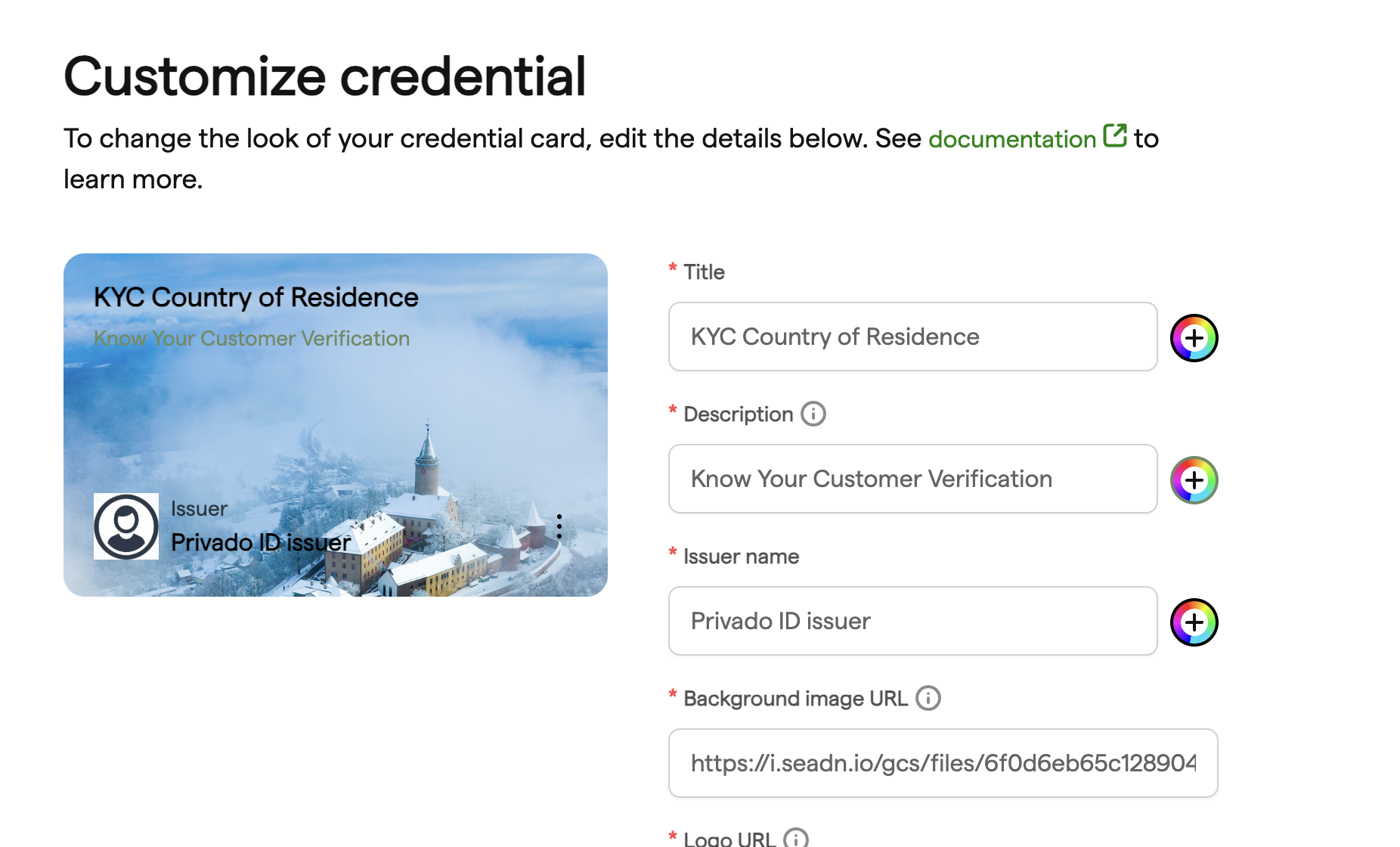
Step 2: Publish to IPFS
- After filling out the metadata, click on “Publish to IPFS”.
- The Builder will bundle and publish your Display Method JSON to IPFS.
Step 3: Obtain the IPFS Link
- Wait for the publishing response.
- Copy the IPFS link provided (e.g.,
ipfs://...orhttps://ipfs.io/ipfs/...). - This link uniquely references your Display Method and will be used in the Issuer Node.
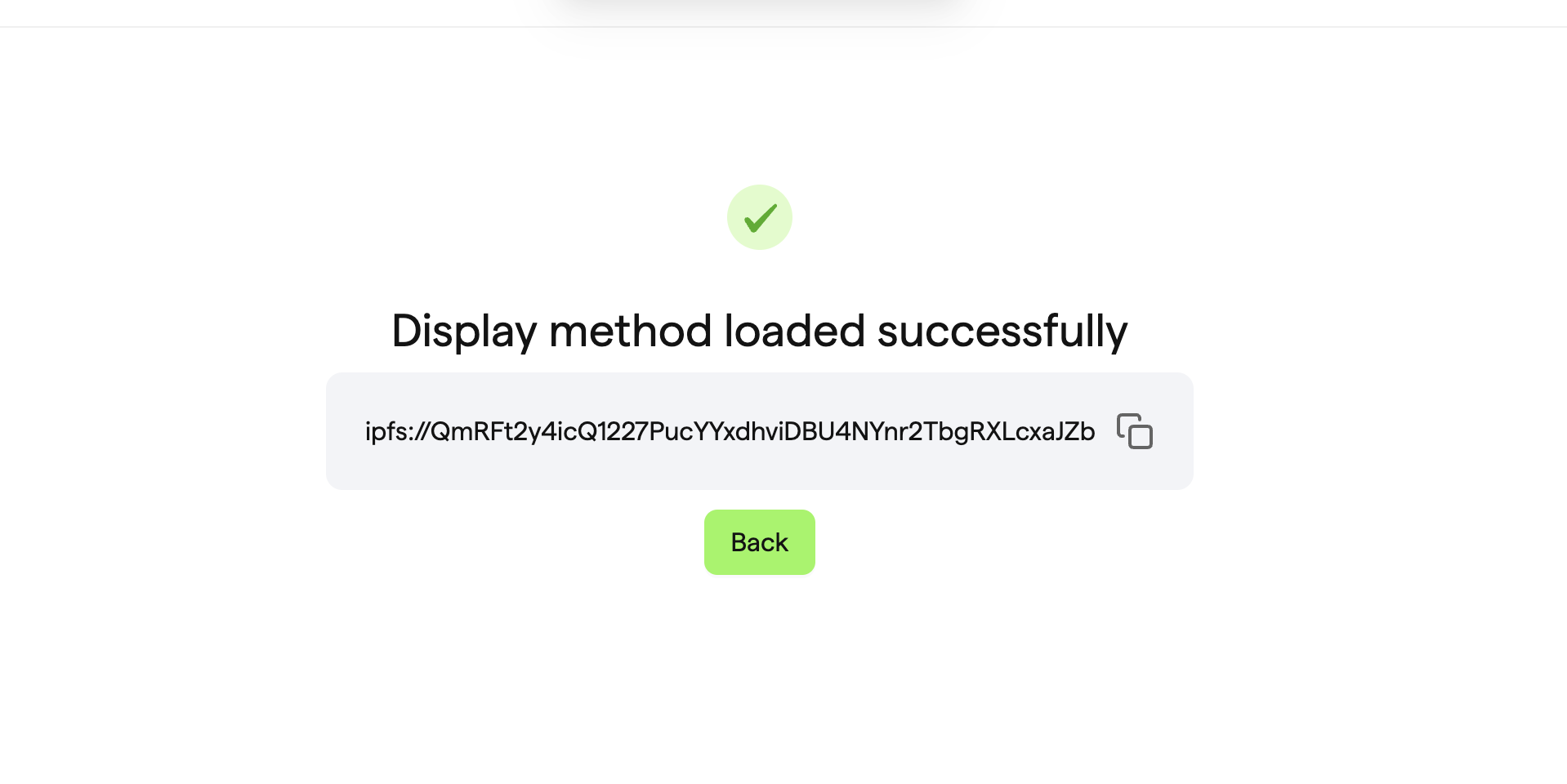
Usage of a Display Method in Issuer Node
Adding the Display Method to the Issuer Node
In your Issuer Node, navigate to the Display Method section (go to
/display-methods/createor click Create a Display Method).Fill out the form:
Provide a unique name for the Display Method (e.g.,
KYC Age Display MethodorEmployee Achievement Method).Paste the IPFS URL from the previous step into the
URLfield.
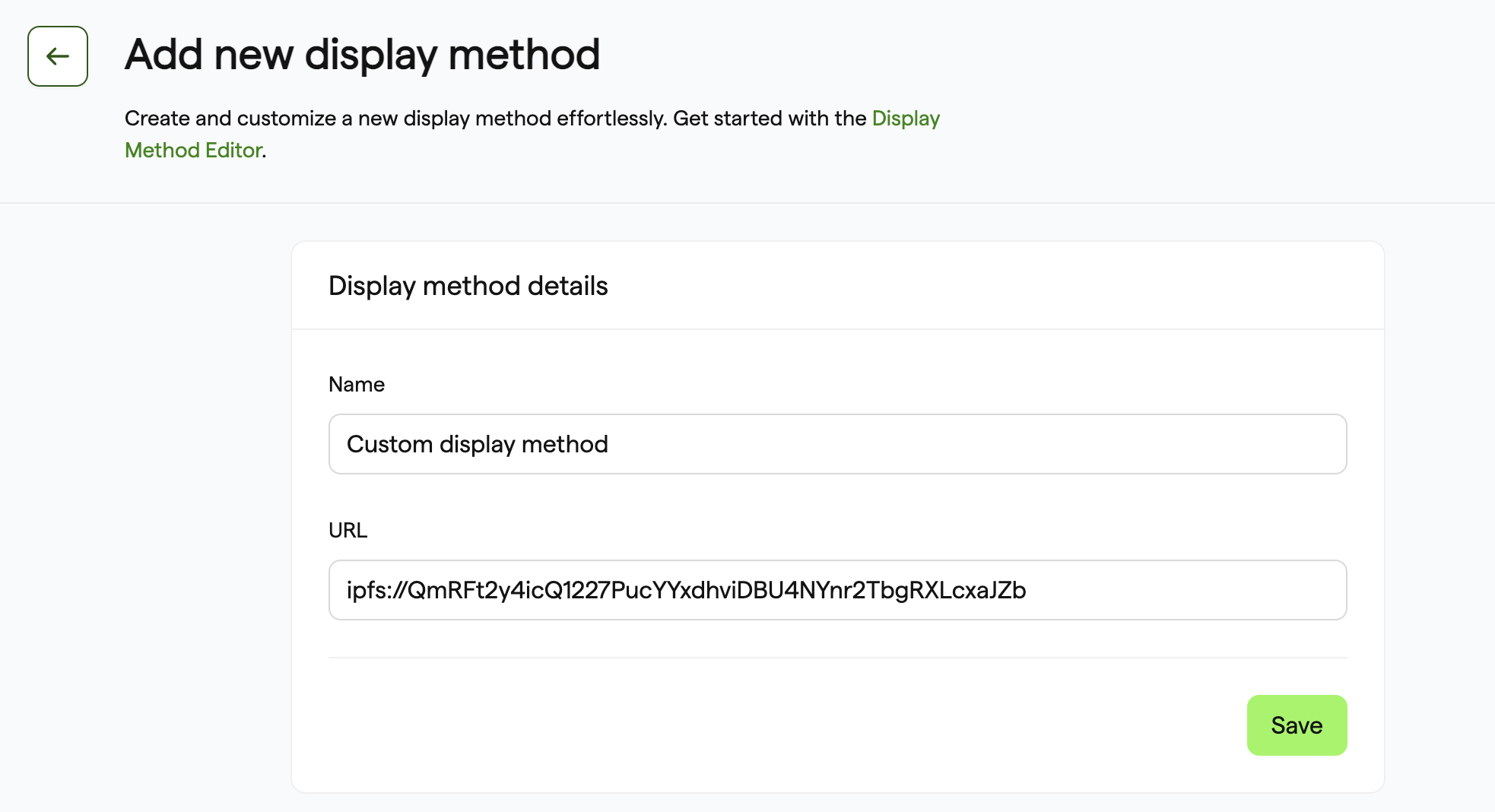
Save your changes. The Display Method is now registered with your Issuer Node.
Using a Display Method When Issuing Credentials
- In the Issue Credential flow, enable the Display Method checkbox.
- Select your newly created method from the dropdown list.
- Once you issue the credential, it will reference your custom Display Method.
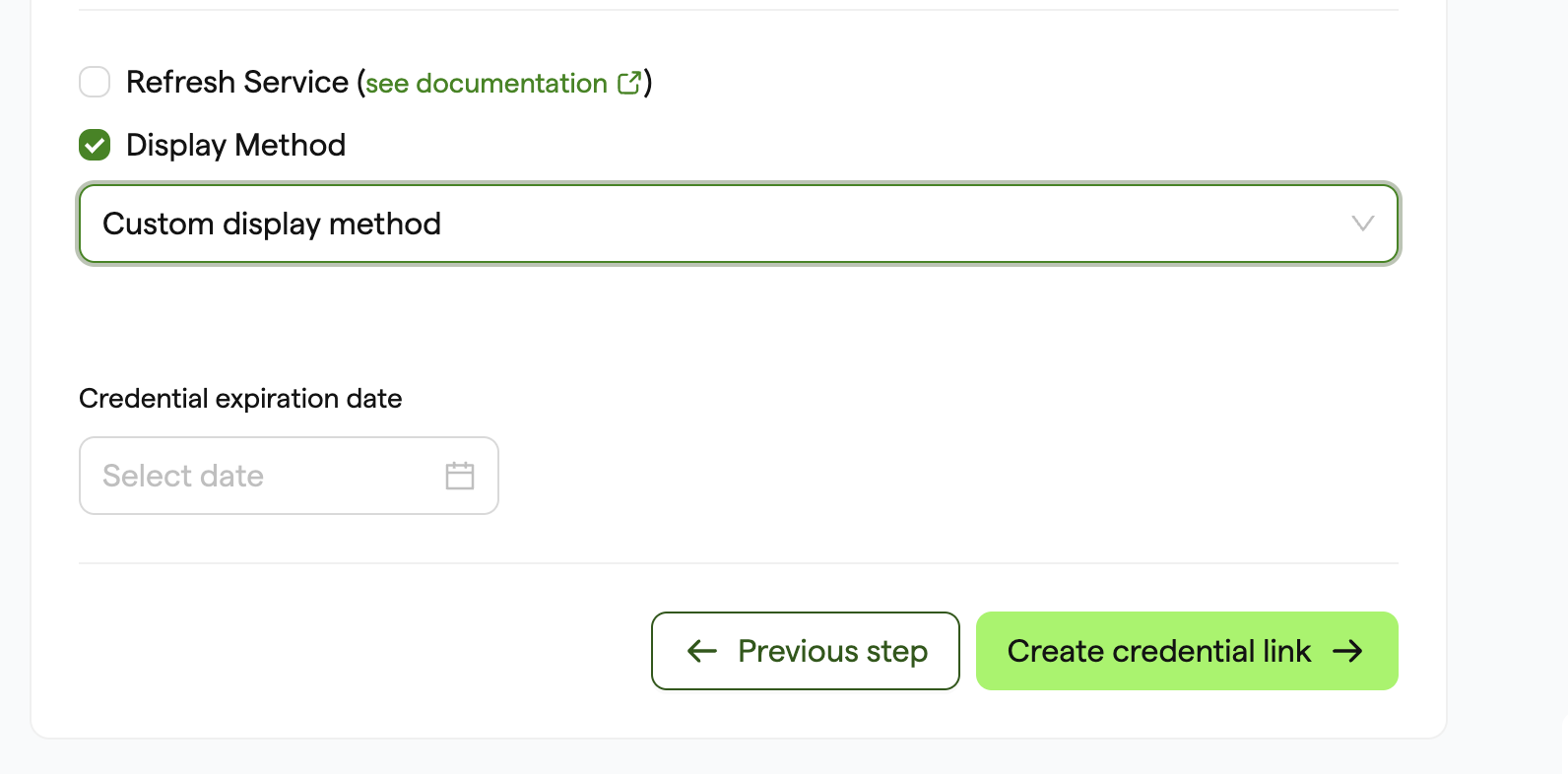
Setting a Default Display Method for a Schema
- On the Schema Details page in the Issuer Node, find the Display Method selector.
- Choose a default method for that schema.
- Any credential issued under this schema will automatically use the default Display Method (unless manually overridden).
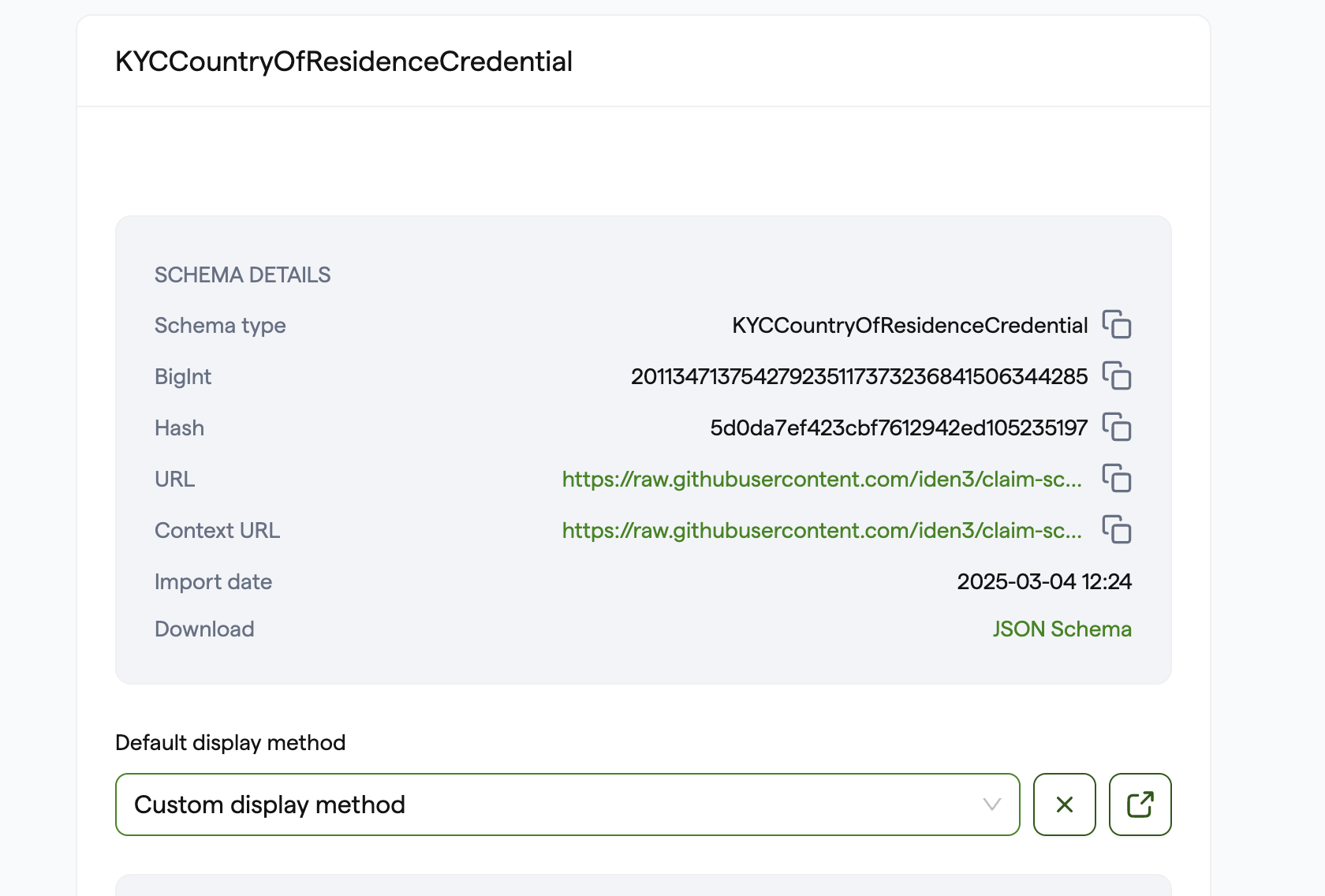
Editing or Deleting a Display Method
To edit or delete a Display Method, go to:
- The detail page of the Display Method, or
- The list of all Display Methods.
Locate the edit or delete icons to make changes accordingly.
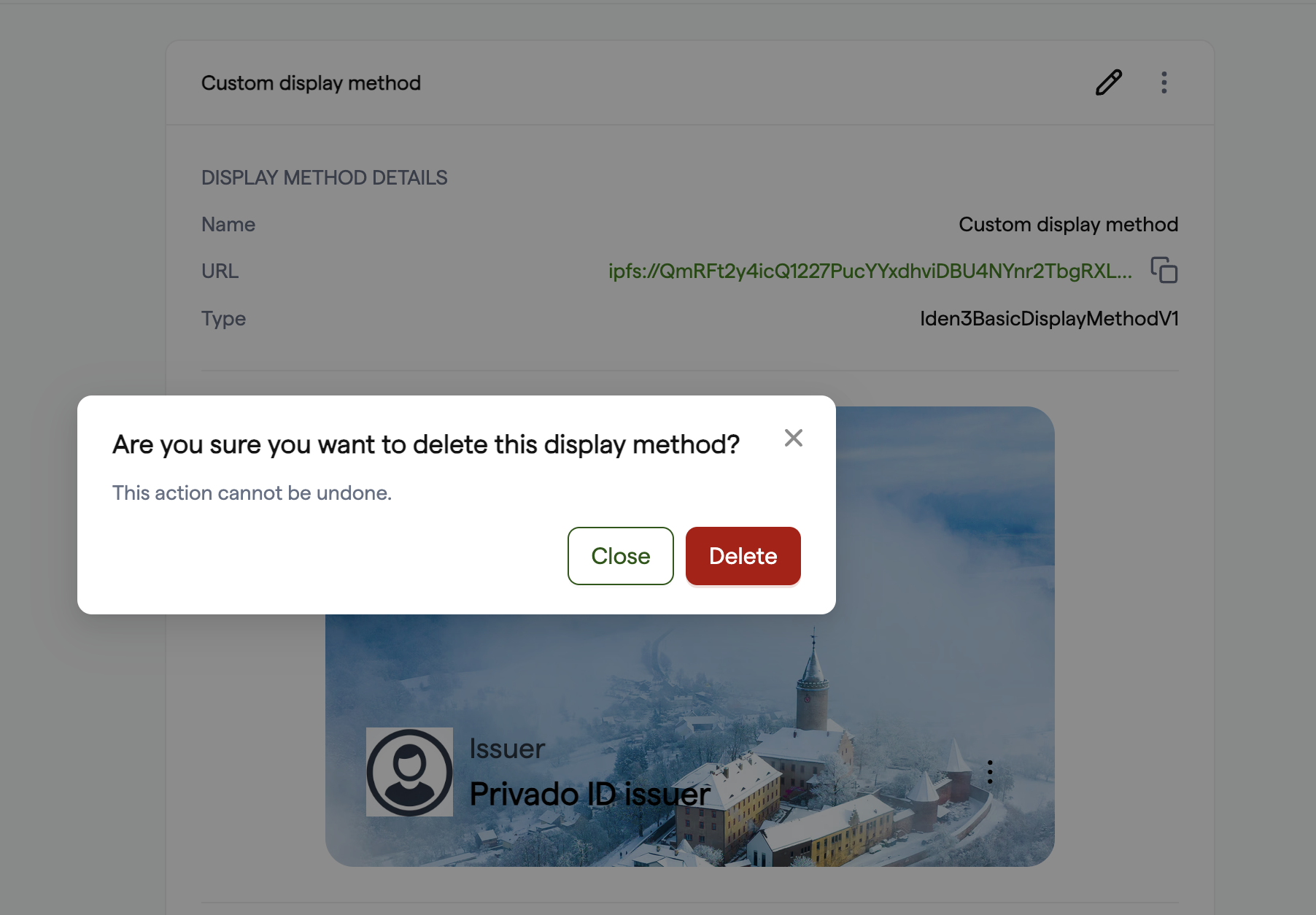
API References
Below is a summary of the relevant API endpoints to manage Display Methods and schemas:
New APIs Added in the Issuer Node
- Create Custom Display Method
- Delete Display Method
- Get All Display Methods
- Get Display Method
- Update Display Method
- Update Schema
Updated APIs in the Issuer Node
- Get Schemas
- Now returns a
displayMethodIDin the schema response.
- Now returns a
- Get Schema
- Now returns a
displayMethodIDin the schema response.
- Now returns a
Links
Conclusion
With these steps, you can create, manage, and apply custom Display Methods to credentials in the Privado Issuer Node. By leveraging custom layouts, organizations, and institutions can ensure consistent branding and meaningful designs for their verifiable credentials. This not only adds professionalism but also improves the user’s trust and recognition of your issued credentials.